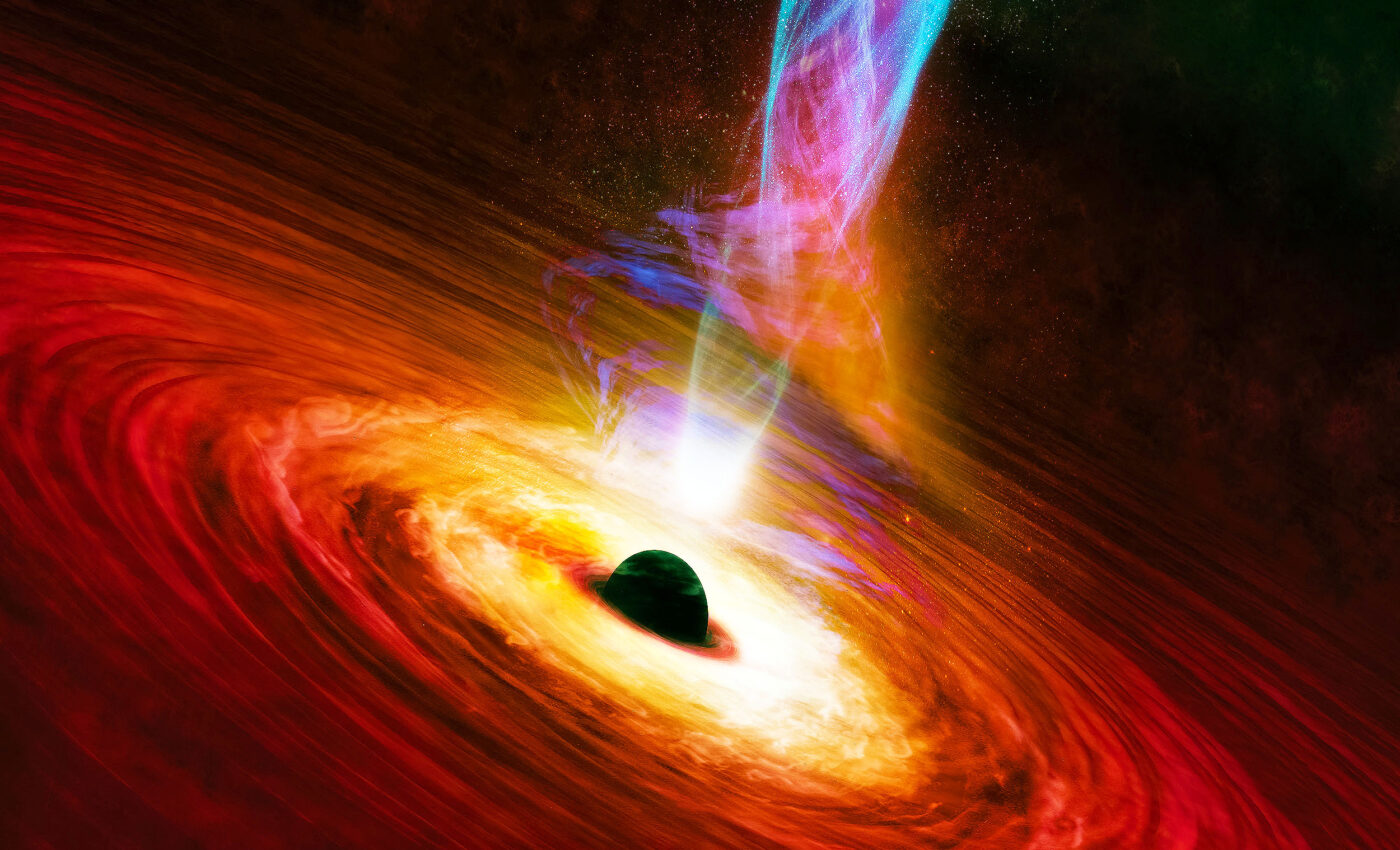
Oldest black hole ever discovered dates back to the dawn of time
An international research team has unveiled the oldest known black hole, offering new insights into the early universe’s mysteries.
This ancient entity, observed by the University of Cambridge-led team using the James Webb Space Telescope (JWST), dates back to just 400 million years after the Big Bang, over 13 billion years ago.
The findings, led by Professor Roberto Maiolino and hailed as “a giant leap forward”, have been published in the esteemed journal Nature.
Challenging conventional wisdom
The significance of this discovery lies in its challenge to our existing beliefs about black hole formation and growth.
This black hole, several million times the mass of our Sun, existed at a time when the universe was in its infancy, raising questions about the traditional theories of black hole development.
It suggests that supermassive black holes, like the one at the center of our Milky Way, might not only grow over billions of years but could also be ‘born big’ or grow at rates previously thought impossible.
Rethinking black hole formation
Standard models propose that supermassive black holes originate from the remnants of dead stars. These remnants collapse, potentially forming black holes about a hundred times the mass of the Sun.
However, for the black hole observed by Maiolino and his team, the traditional growth trajectory does not apply.
Given the age of the universe at the time, it would have been impossible for this black hole to reach its massive size through standard growth processes.
Professor Maiolino, from Cambridge’s Cavendish Laboratory and Kavli Institute of Cosmology, emphasizes the need to explore alternative formation theories.
He suggests that the gas-rich environments of early galaxies could have been feeding grounds for burgeoning black holes, likening them to a buffet.
“It’s very early in the universe to see a black hole this massive, so we’ve got to consider other ways they might form,” said Maiolino. “Very early galaxies were extremely gas-rich, so they would have been like a buffet for black holes.”
Galaxy GN-z11 hosts the oldest black hole
This particular black hole, located in the young galaxy GN-z11, stands out for its voracious appetite. Unlike its counterparts in later epochs, it consumes matter from its host galaxy at an unprecedented rate. Black holes, by their nature, devour surrounding material to fuel their growth.
This consumption is usually observed through the glow of the accretion disc, formed at the black hole’s edge, where gas heats up and emits ultraviolet radiation.
For GN-z11, the energetic black hole at its center significantly influences its characteristics and development.
The relationship between black holes and their host galaxies is complex. In the case of GN-z11, the black hole’s intense consumption of gas might be detrimental to the galaxy’s growth.
Excessive consumption leads to the expulsion of gas at high speeds, a phenomenon likened to an ultra-fast wind.
This process could halt star formation within the galaxy, ultimately leading to its demise. However, this also poses a risk to the black hole itself, as it cuts off its main source of sustenance.
New era in cosmology
The discovery made possible by JWST marks a new era in space exploration and research. Professor Maiolino reflects on this as the most exciting time in his career, drawing parallels between the leap in sensitivity offered by JWST and the transition from Galileo’s telescope to modern optics.
He notes that the universe, as observed through JWST, is revealing more than what was visible with the Hubble Space Telescope, and this is just the beginning.
Looking ahead, Maiolino anticipates that JWST’s capabilities might lead to the discovery of even older black holes. His team aims to use future observations to identify smaller black hole ‘seeds’, shedding light on their formation processes.
“It’s a new era: the giant leap in sensitivity, especially in the infrared, is like upgrading from Galileo’s telescope to a modern telescope overnight,” Maiolino said.
“Before Webb came online, I thought maybe the universe isn’t so interesting when you go beyond what we could see with the Hubble Space Telescope. But that hasn’t been the case at all: the universe has been quite generous in what it’s showing us, and this is just the beginning.”
In summary, this research, a collaboration involving the European Research Council, the Royal Society, and the Science and Technology Facilities Council (STFC) of UK Research and Innovation (UKRI), challenges our understanding of the cosmos and points us in a new direction of exploration and discovery.
As we stand on the threshold of these new cosmic revelations, the universe continues to generously unveil its secrets, beckoning us to keep looking up and questioning.
The full study was published in the journal Nature.
—–
Like what you read? Subscribe to our newsletter for engaging articles, exclusive content, and the latest updates.
Check us out on EarthSnap, a free app brought to you by Eric Ralls and Earth.com.
—–













